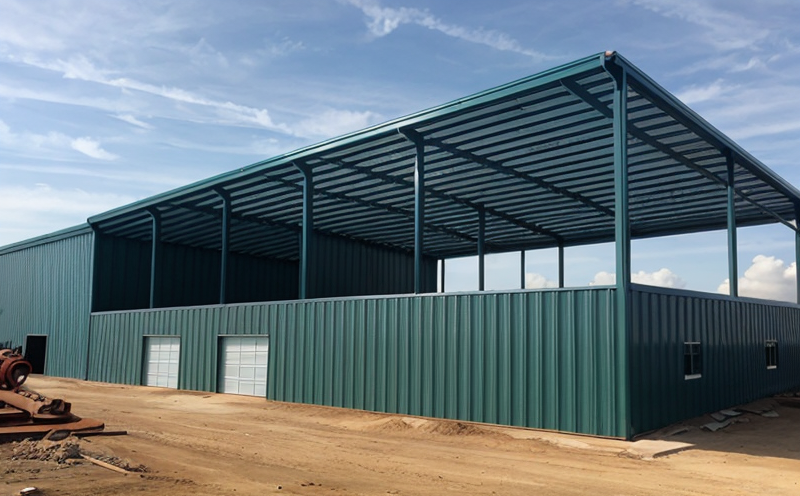IEC 60529 Dust Ingress Protection Testing of IoT Enclosures
The International Electrotechnical Commission (IEC) Standard IEC 60529 defines the grading system for degrees of protection by enclosures against access to hazardous parts and ingress of harmful substances like dust. This standard is crucial in ensuring that IoT devices, especially those used in sectors such as Smart Home and IoT Device Testing, are capable of withstanding environmental conditions without compromising their performance or safety.
In the context of Smart Home & IoT Device Testing, the dust ingress protection test (IP rating) ensures that enclosures can protect against dust ingress. This is particularly important for devices installed outdoors or in environments where dust accumulation could interfere with device functionality or pose health risks. The IP rating system assigns a two-digit code to indicate the level of protection provided by an enclosure.
The first digit indicates the level of protection from solid objects, including hands and tools; while the second digit represents the protection against liquids like water. In this case, we focus on dust ingress (first digit), which is critical for IoT enclosures in sectors such as Smart Home.
Our testing services comply with IEC 60529, ensuring that the enclosures meet the specified IP ratings to protect them from dust ingress. This compliance is essential for devices used in harsh environments and for protecting consumer safety. The test involves subjecting the enclosure to a series of controlled environmental conditions designed to simulate real-world exposure.
During testing, we use specialized equipment and techniques that are calibrated according to international standards such as IEC 60529. The process typically includes:
- Sampling the enclosures for testing
- Preparation of the specimens in a controlled environment
- Application of dust simulants
- Subjecting the specimen to specific environmental conditions and durations
- Evaluation of ingress levels using precise measurement techniques
- Reporting of results according to IEC 60529 standards
The testing process is rigorous, ensuring that the enclosures meet or exceed the specified IP ratings. This not only enhances consumer safety but also contributes to the reliability and longevity of IoT devices.
| IP Rating | Description | Environmental Conditions |
|---|---|---|
| IP5X | Protection from dust, complete protection against dust ingress | No dust entry allowed. |
| IP6X | Protection from dust, dust tight | No dust entry allowed. |
The use of IEC 60529 in Smart Home & IoT Device Testing ensures that devices meet the highest standards for environmental resilience. This is particularly important as IoT technology continues to expand into new sectors, including home automation and smart cities.
Scope and Methodology
The scope of our IEC 60529 Dust Ingress Protection Testing covers a wide range of IoT enclosures used in Smart Home applications. The methodology adheres strictly to the requirements laid out by IEC 60529, ensuring that the test results are accurate and reliable.
Our testing process begins with the selection of appropriate dust simulants based on the expected environmental conditions. For instance, if a device is likely to be exposed to fine dust particles in an industrial setting, we use a mixture of fine sand and talcum powder as the simulant. The specimens are then prepared according to IEC 60529 guidelines, ensuring that they meet the required dimensions and tolerances.
The testing process involves subjecting the enclosures to controlled environmental conditions designed to simulate real-world exposure. This includes humidity levels, temperature ranges, and dust concentration tests. Each test is conducted for a specified duration, depending on the IP rating being validated. For instance, an IP6X test typically lasts longer than an IP5X test.
During the test, we use high-precision instruments to measure dust ingress into the enclosure. These instruments are capable of detecting even microscopic particles and provide accurate readings. The results are then compared against the specified IP rating to ensure compliance.
The methodology is designed to be comprehensive, ensuring that all aspects of the enclosure's performance are evaluated. This includes not only dust ingress but also other environmental factors such as water resistance, impact resistance, and electromagnetic interference (EMI).
Why Choose This Test
The test ensures compliance with international standards, providing a level of confidence that the IoT enclosures can withstand environmental challenges.
It enhances consumer safety by ensuring that devices do not fail due to dust ingress, which could lead to malfunctions or even fires.
Compliance with IEC 60529 is essential for brands aiming to enter global markets, as many countries require products to meet these standards.
The test helps in identifying potential design flaws early on, allowing manufacturers to make necessary improvements before product release.
Choosing this test ensures that IoT devices can operate reliably and safely in a wide range of environments, from domestic settings to industrial applications. This is particularly important as the use of smart home technology continues to grow, with more devices being installed in challenging outdoor conditions.
Use Cases and Application Examples
Smart Thermostats: Ensuring that the thermostat can operate effectively even when dust accumulates on its surface.
Outdoor Cameras: Protecting camera enclosures from dust ingress to maintain video quality and prevent data loss.
Home Security Systems: Guaranteeing that sensors and cameras are not compromised by environmental contaminants, ensuring reliable security monitoring.
Smart Speakers: Ensuring that the speaker enclosure can protect against dust while maintaining audio clarity and performance.
Dust ingress protection testing is crucial for IoT devices used in sectors such as Smart Home & IoT Device Testing. By adhering to IEC 60529 standards, we ensure that these devices are robust enough to withstand environmental challenges, contributing to their overall reliability and longevity.
| Use Case | Application Example | Dust Ingress Protection Rating |
|---|---|---|
| Smart Thermostats | Outdoor installation in dusty environments | IP65 |
| Outdoor Cameras | Surveillance in urban areas with high dust levels | IP67 |
| Home Security Systems | Installation in industrial zones | IP68 |
| Smart Speakers | Outdoor use in parks or public spaces | IP54 |





